Mexico-US investigation links cartel downing of military helicopter to Oregon gun supplier
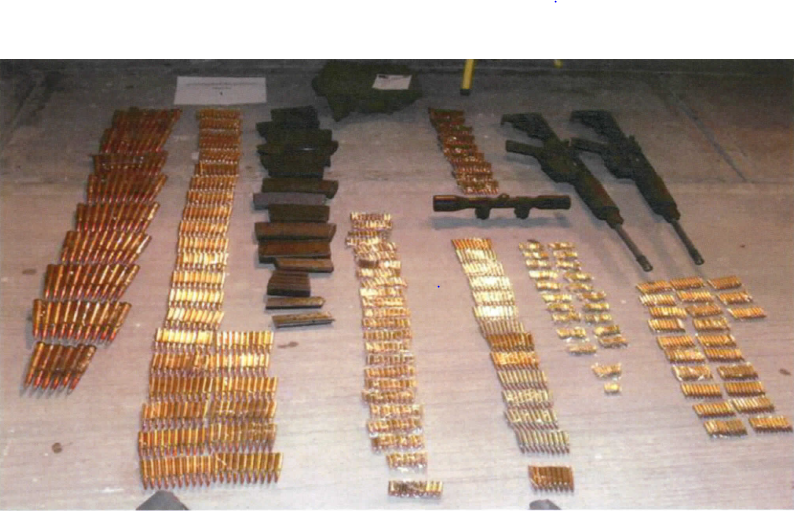
PORTLAND, Ore. ― A joint Mexico-U.S. investigation linked a weapon used to blast a Mexican military helicopter out of the sky to a supplier from Oregon, federal firearms officials confirmed to The Courier Journal.
Eight Mexican soldiers with SEDENA, Mexico's national defense, and one Mexican police officer died in the 2015 crash on a mission to arrest top U.S. target El Mencho, the world's most powerful cartel boss. But the link between the incident and Portland, Oregon, had not been made public until now.
"That's huge," Matt Donahue, retired chief of the U.S. Drug Enforcement Administration's foreign operations, said after learning of the connection.
Erik Flores Elortegui, a Mexican native and U.S. citizen who lived in Portland, now tops the Most Wanted list of the Bureau of Alcohol, Tobacco, Firearms and Explosives and is blamed with supplying cartel members with a belt-fed .50-caliber semi-automatic rifle, said Jason Chudy, spokesman for the ATF's Seattle Field Division, which includes Oregon.
"After it was recovered, we obtained information, and we were able to trace it back to Erik Flores," he said.
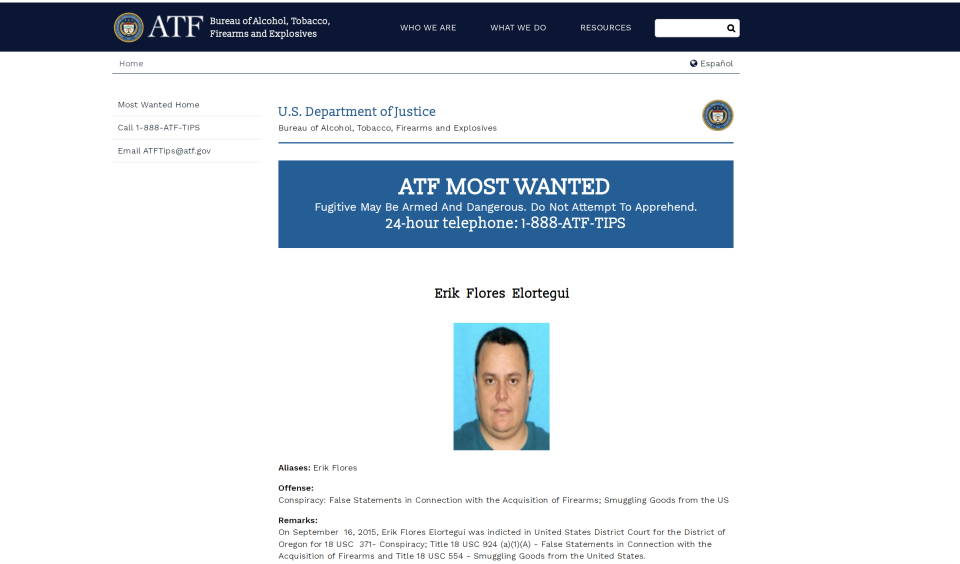
The short summary under his photo on the ATF's website mentions an indictment charging the 40-year-old fugitive with illegally buying weapons and smuggling them out of the U.S., but it doesn't describe the ensuing death toll.
The Mexican Attorney General's office asked the ATF to trace a .50-caliber semi-automatic machine gun they say helped take down the military helicopter in an infamous May 1, 2015, incident that rattled law enforcement on both sides of the border.
Along with the nine who died, there were others who were injured. Ivan Morales, the only other Mexican police officer on board, had to crawl through the fiery wreckage and suffered severe burns and disfigurement.
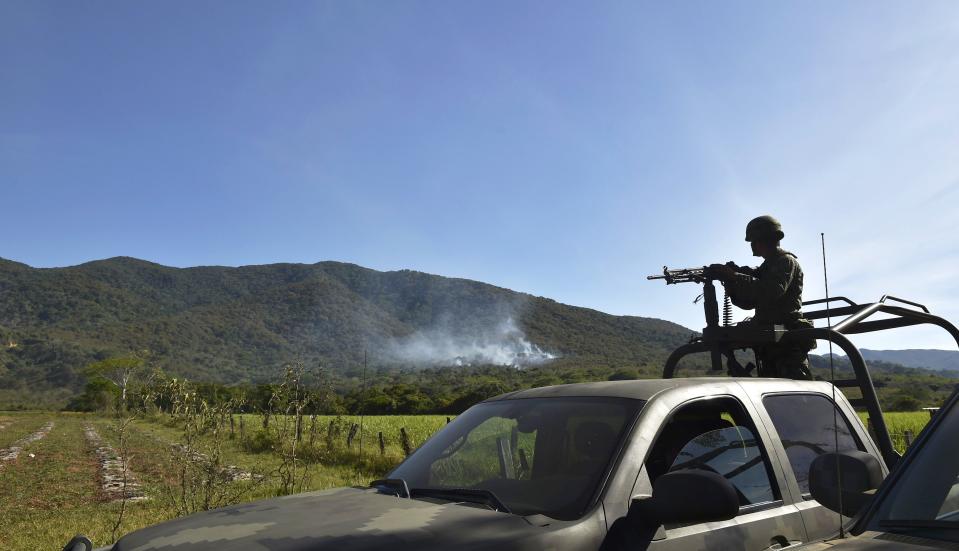
They had been on a mission so secretive that they weren't told about it until they hurried in the darkness to a caravan of six helicopters at the Colima airport, six hours south of Puerto Vallarta, and headed out to capture the leader of global powerhouse Cártel Jalisco Nueva Generación, or CJNG.
Many Americans don't know his name ― Rubén Oseguera Cervantes or El Mencho ― but he plays a big role in the availability of illegal drugs in bustling cities and rural towns across the U.S., driving up record-high overdose deaths.
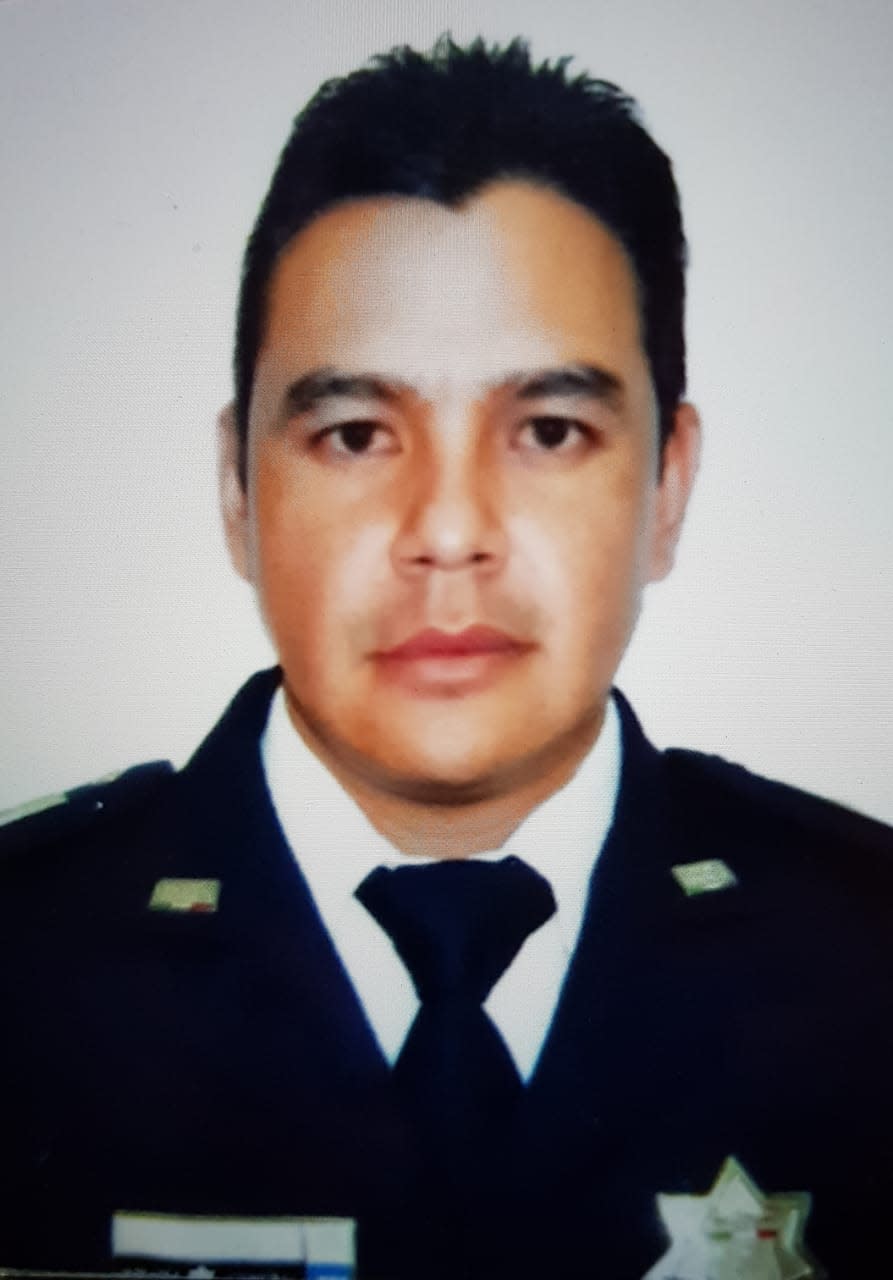
After learning of his hideout, the military flew north over the mountain peaks of rural Jalisco, cartel headquarters.
El Mencho and his team of mercenaries were ready inside their own caravan of trucks and heavily armed. Mexican officials told the ATF the cartel fired the .50-caliber semi-automatic machine gun from Portland along with other weapons. A round tore through the rotor of Morales' aircraft, causing it to catch on fire and spiral to the ground.
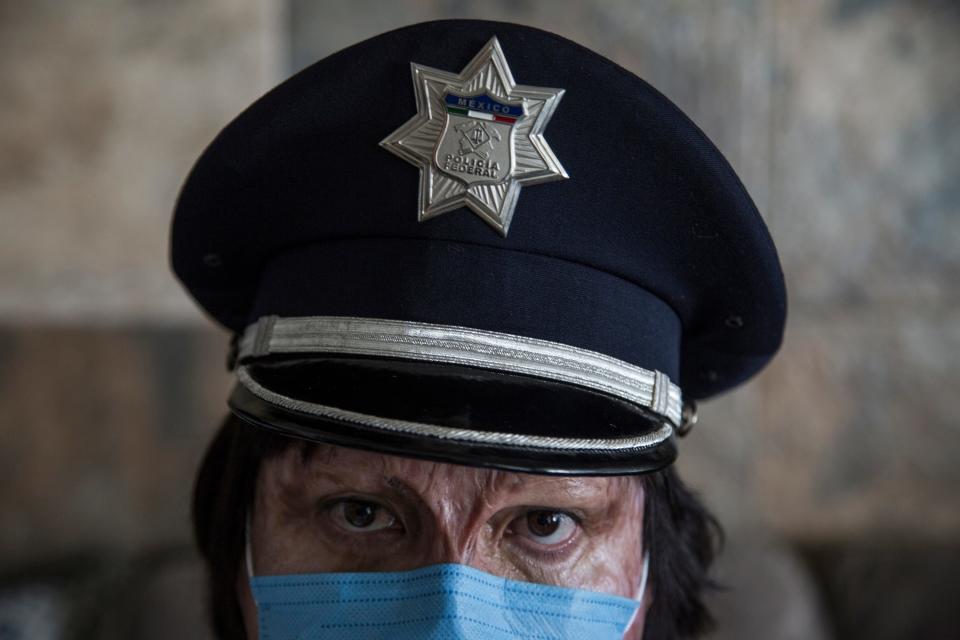
During an interview with The Courier Journal in 2019, Morales said: "I thought I was going to die." Before leaving home early that morning, his wife told him he was going to be a father for the first time. The then-33-year-old repeatedly told paramedics and doctors so they would understand that despite the severity of his injuries, he had to fight to live.
CJNG, which has an army of 5,000, also set up "narco blockades," road blocks at major intersections to the main city, Guadalajara. They set businesses on fire, blew up gas tanks at convenience stores and created chaos.
"That was a message to the Mexican government from El Mencho, saying: 'We run Jalisco. Don't come after me again. Don't do it again or this will be the result,'" said Donahue, who worked for years in Mexico City, overseeing agents hunting for El Mencho and teaming with SEDENA soldiers.
"It absolutely worked," he said.
"If you look at today, the Mexican government has zero control of Jalisco, and Guerrero, as well," Donahue said. "The military does not go in there. The Navy does not go in there."
More:Outbreak of Mexican cartel violence targeting innocents raises worries of what’s to come
Guerrero, known for its coastal tourist town of Acapulco, is one of six Mexican states with "do not travel" warnings from the U.S. State Department. Department officials also advise reconsidering travel to Jalisco.
CJNG produces an enormous amount of illicit drugs in both Guerrero and Jalisco, known as "narco states."
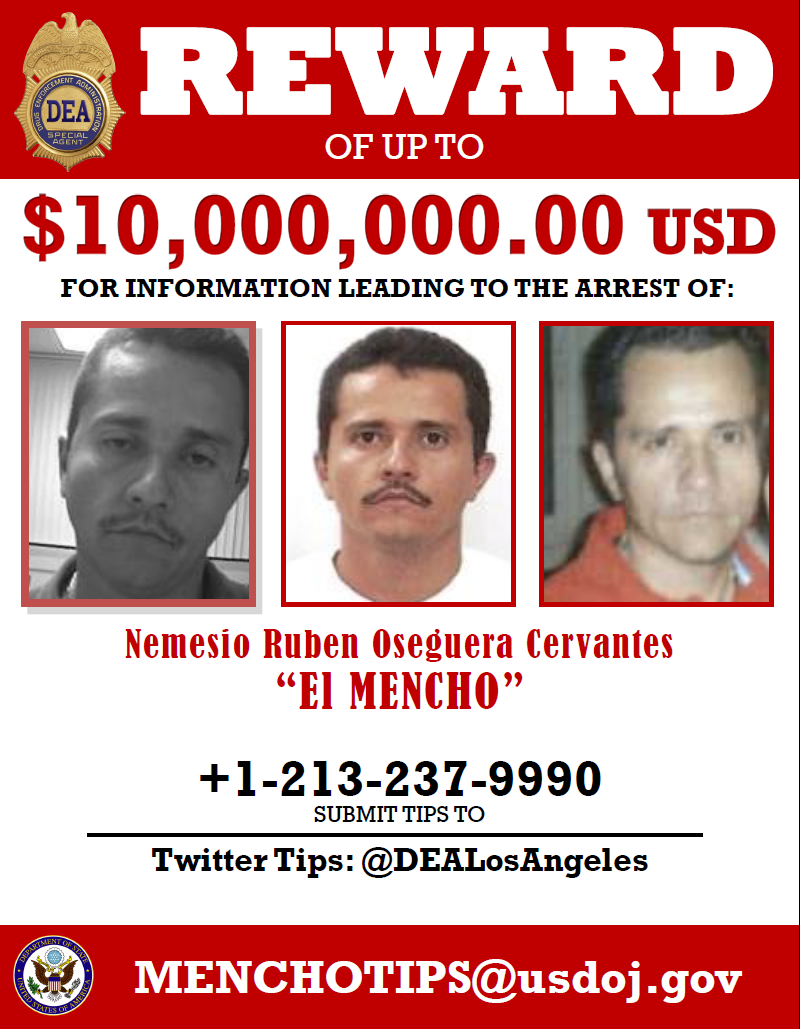
The downing of the helicopter and ensuing violence is a key reason why El Mencho remains free to this day, despite a decade-long search by the DEA and a $10 million reward.
"Even though there's a warrant for his arrest in Mexico as well as the United States, they haven't even taken a run at him since then," Donahue said.
"That tactic ― attacking innocent people, blowing everything up and going after government buildings ― worked for him. They know he'll do it again."
Mexican officials initially said an RPG, a rocket propelled grenade launcher, was used to strike the helicopter's rotor and down the aircraft. It's unclear whether investigators believe the helicopter was struck by both. It's also unclear where Mexican investigators found the .50-caliber and how they know CJNG used it to help down the aircraft.
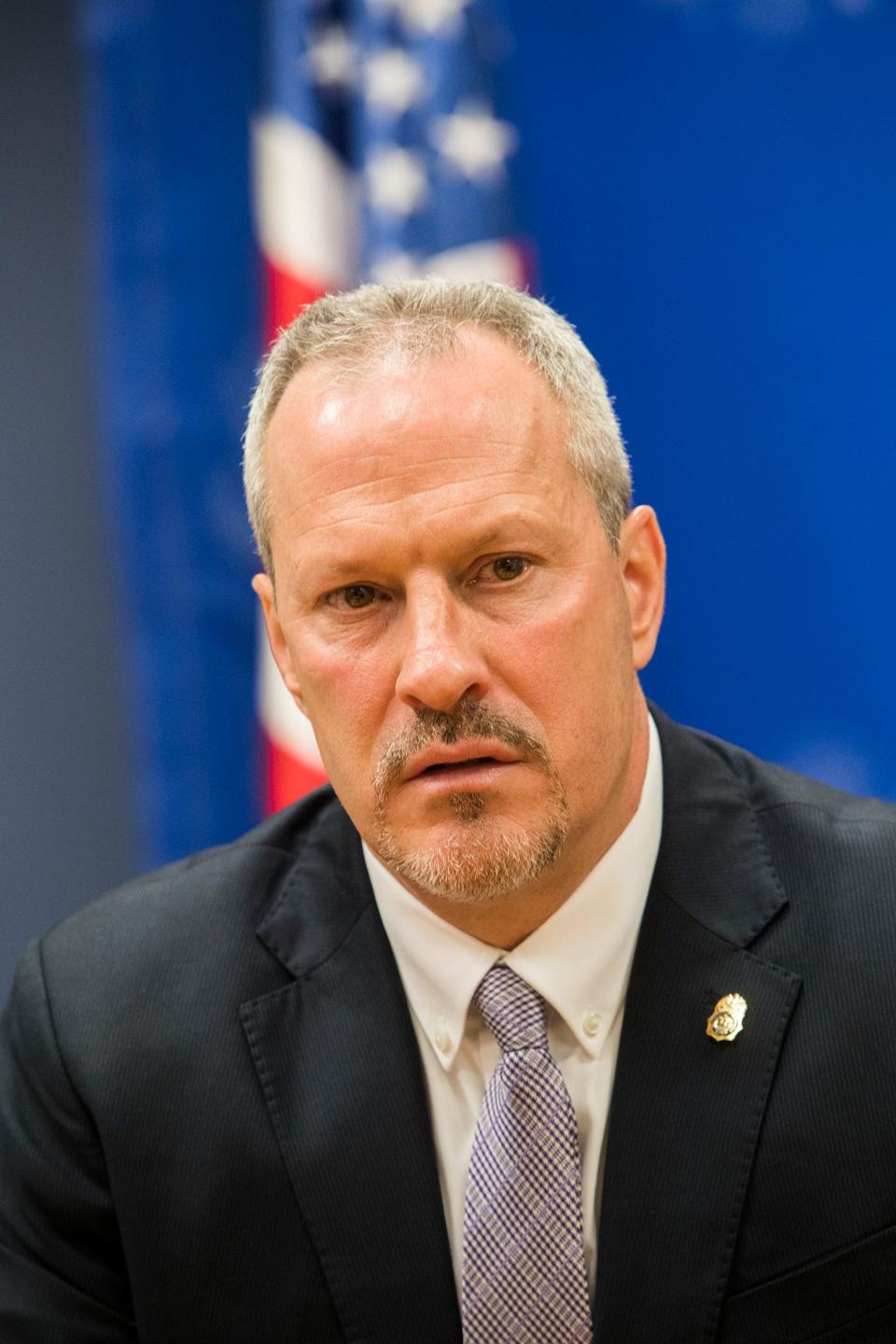
Donahue said he would like to see the evidence collected by Mexican officials, pointing out that cartel members also acquire weapons from other countries.
"I would like to see Mexico authorities share that information with U.S. law enforcement authorities and utilize that evidence and charge Mencho with shooting down that helicopter and his trafficking activities."
The infamous Sinaloa Cartel and its leader "El Chapo" had remained the dominant cartel, but this was a sign of CJNG's capabilities and ruthlessness. With El Chapo now serving a life sentence in a U.S. prison and his cartel fractured with feuding family members, CJNG emerged as the world's most powerful drug cartel.
Security experts weigh in:With drug cartel violence, is it safe to travel to Mexico?
A special investigative report in 2019 by The Courier Journal warned of CJNG's ruthlessness in Mexico and its reach across the U.S. into small towns. CJNG is based in Guadalajara, Mexico's second-largest city, in the state of Jalisco. But it has expanded operations in the majority of Mexico's states. And CJNG has been detected on every continent except Antarctica.
Both CJNG and the Sinaloa Cartel are blamed for the bulk of illicit fentanyl in the U.S., which propelled the overdose death toll to a record 108,000 deaths last year.
But Mexico officials point out that the cartels flourish because of the U.S. demand for drugs and the U.S. supply of military-grade weapons.
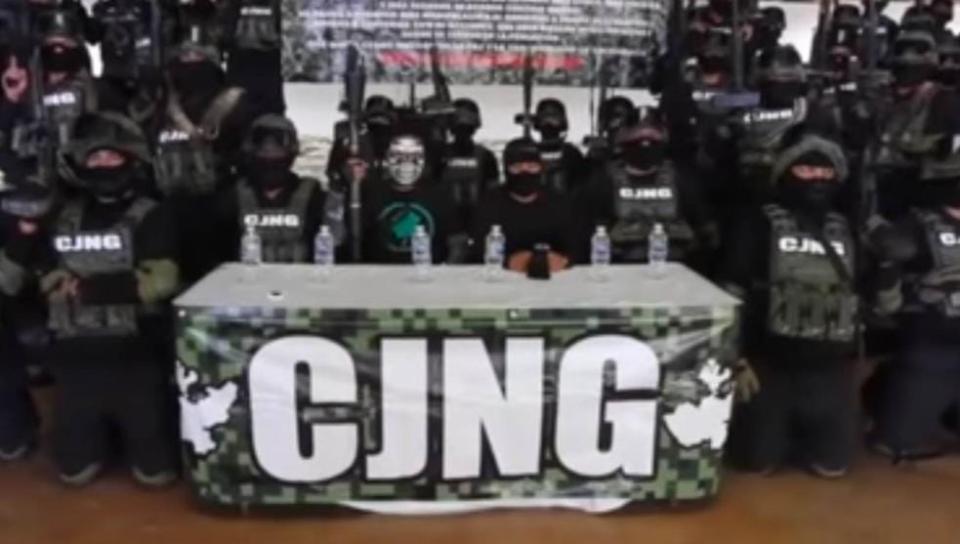
In Mexico, civilians with gun permits can buy from one store. In Oregon, buyers can buy from 1,208. Portland alone has 53 gun stores and pawn shops selling firearms, according to the ATF's Seattle Field Division, which also includes Oregon.
ATF agents went to a Mexican Army base in Colima, south of Jalisco, in 2016 to help trace the gun, Chudy said.
ATF confirmed the .50-caliber had been purchased by Flores Elortegui at a gun shop in Rainier, a town on the south bank of the Columbia River across from Longview, Washington.
He lied on the ATF form, claiming he wanted the $15,350 gun for himself, the indictment alleges. He listed his home as Beaverton, Oregon, seven miles southwest of downtown Portland.
Some documents remained sealed, and it's unclear how and why he allegedly partnered with CJNG. He was born in Ramon Corona in the Mexican state of Durango, but became a U.S. citizen in 2009 in Portland, according to the ATF.
ATF agents already had been investigating Flores Elortegui and his co-defendant Robert Allen Cummins for making at least 25 straw purchases of weapons and accessories in 2013 and 2014 and illegally exporting guns, according to court records. A federal grand jury in Portland returned an indictment against both men in September 2015, but it initially was sealed.
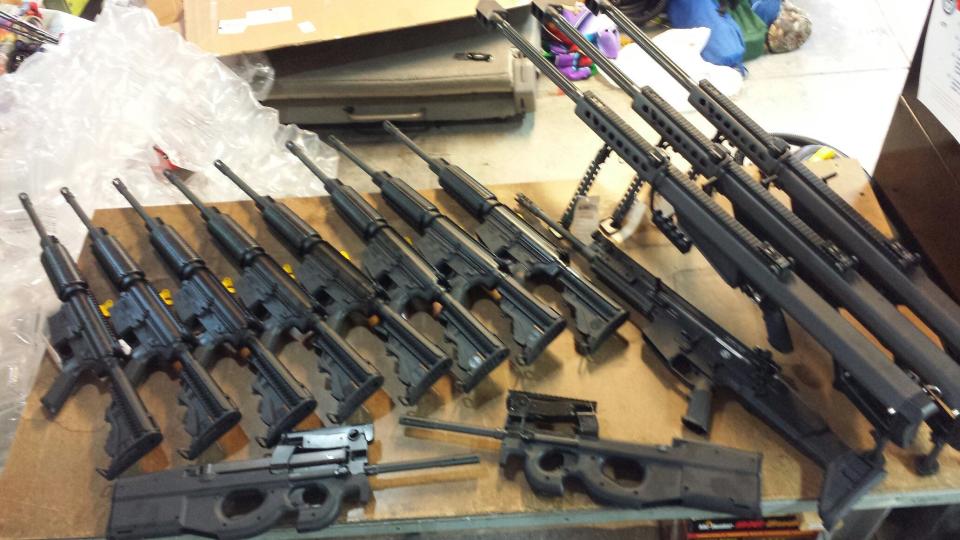
Now unsealed, the indictment alleges: California co-conspirators, who weren't named, made deposits in November 2013 totaling about $52,000 in San Ysidro and Calexico into Flores Elortegui's bank accounts. A month later, Flores Elortegui spent about $14,000 at Oregon stores buying several guns, including a .50-caliber rifle, several AK-47 type rifles and a .38-caliber super pistol.
The pattern of bank deposits and gun purchases continued. On May 15, 2014, Cummins paid $38,100 in cash for 14 guns bought some of the guns, including several military-grade weapons and three .50-caliber rifles. The two men tried to hide their crimes by texting about large amounts of "burritos."
Cummins handed off several of the guns to Flores Elortegui, who drove them to the border May 18, 2014, and checked into a motel in Calexico. The next day, he drove across the border to Mexicali, Mexico.
Weeks later, the Mexican military seized many of the same guns, including two of the .50-caliber rifles from a tractor-trailer in San Luis Rio de Colorado in the state of Sonora, prosecutors allege in court documents. The guns and a large amount of ammunition, magazines and firearm accessories were wrapped in thin plastic and tucked inside bales of alfalfa.
Cummins ended up selling a gun to an undercover ATF agent, court records show. He pleaded guilty in 2016 to conspiring to illegal buy and smuggle guns.
Cummins was a lifelong resident of Lane County, Oregon, and a known fishing guide before he was enticed into the "exotic" gun market by Flores Elortegui, his attorney noted in the defense sentencing memo asking for leniency.
"Mr. Cummins is an almost child-like individual who was excited about guns and the gun culture and never considered the consequences of placing instruments of destruction into the stream of commerce until he was facing the certainty of prison time, the loss of his life savings and the loss of his business," this attorney argued.
Prosecutors portrayed Cummins in the government's sentencing memo as a willing middle man, pointing to his statements to an undercover ATF agent. He bragged how he buys and sells thousands of dollars worth of firearms without a license and "operates far from the edge of legal."
US tourists beware:Popular Mexico getaway plagued by drug cartel intimidation and violence
A judge sentenced him in February 2017 to serve three years and four months in federal prison and then remain on supervised release for three years.
Prosecutors brought him back before a judge in April to ask that his release be revoked due to a violation, court records show. The document explaining the alleged violation remains sealed, and the revocation hearing has been postponed.
Flores Elortegui remains at large and ATF officials haven't said if they have indications that he fled to Mexico. Agents ask that anyone with information about his whereabouts to call the 24-hour hotline at 888-ATF-TIPS.
Reporter Beth Warren: bwarren@courier-journal.com; 502-582-7164; Twitter @BethWarrenCJ.
This article originally appeared on Louisville Courier Journal: Oregon man tied to downing of helicopter by El Mencho's CJNG cartel

